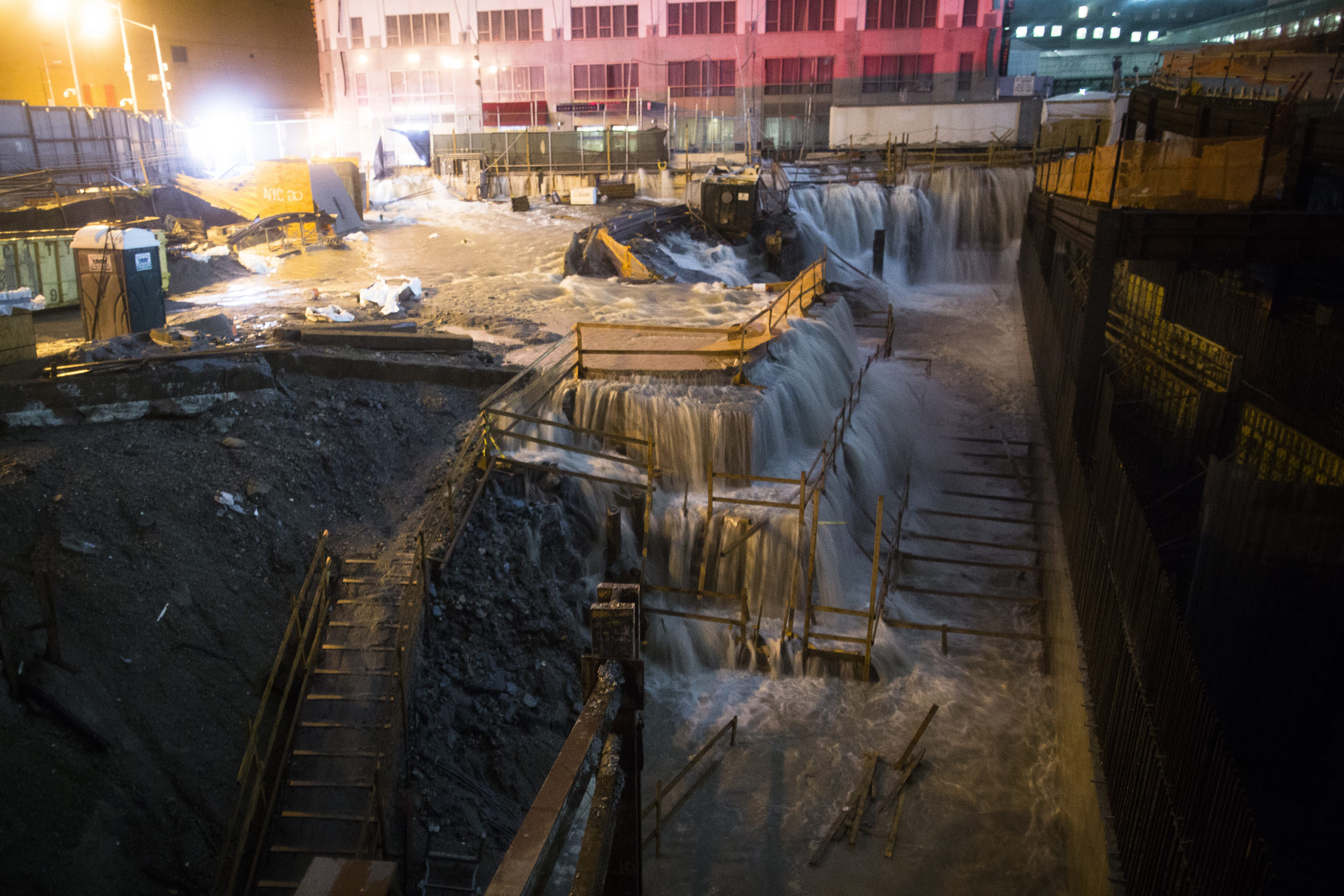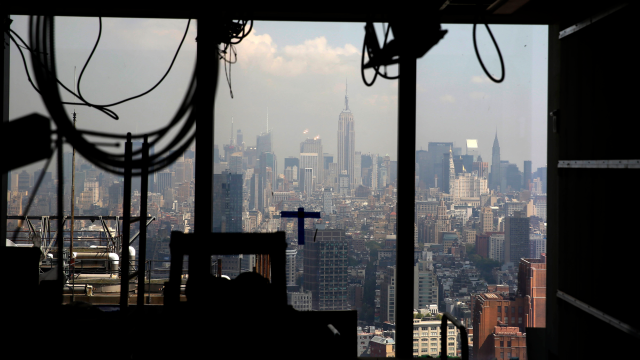Once upon a time, One World Trade was a trumpeted as the future greenest skyscraper in the world. It turned out to be anything but, and today Mother Jones has obtained documents explaining what the hell happened. The short answer is money, bureaucracy, bad design. Oh, and Hurricane Sandy.
It’s a story that would have gone untold, had Climate Desk’s James West not dug into the years-long debacle surrounding the WTC’s completion, including 26 pages of Port Authority documents he uncovered. Let’s break down West’s report into a few pieces. First of all, there was the effort to make One World Trade the tallest building to obtain LEED certification as a green building.
The crux of the plan rested on high-tech energy cells that would cleanly convert natural gas into electricity. But in 2012, Hurricane Sandy threw a water-logged wrench in those plans, flooding the basement of the site. “What no media outlets reported, though, was that the flood also destroyed all nine fuel cells,” says West.

Picture: AP/John Minchillo
But couldn’t the fuel cells just be replaced? Well, that’s where this story gets really hairy. The Port Authority had built a temporary PATH station to keep transit running during construction. Unfortunately, the station sat in the way of a road that was supposed to connect the tower’s permanent loading dock to the Vehicle Security Center, where freight going up into the skyscraper would be screened. Without access to the road until 2015, when the PATH station was due to be dismantled, they couldn’t build the loading dock.
Stay with me. Not having a permanent loading dock might not have been a big deal — except that The Port Authority had signed a contract with its anchor tenant, Condé Nast, requiring that the published be able to move into its new digs by January 1, 2014, or else the Port Authority would face massive financial penalties. So the Port Authority would need to build an interim loading dock to get all of Condé’s equipment up to the tower before that date, or else pay potentially millions in fines.
Here’s where we get back to those fuel cells. The Port Authority decided to go ahead and build the loading dock for Condé Nast. But in doing so, they made it all but impossible to replace the damaged fuel cells, blocking the hatch through which they needed to be installed in the basement. Here’s how West explains it:
Today, more than two years after Sandy, the new loading dock still blocks access to the one window through which the fuel cells could possibly be replaced. Durst admits in a statement to Climate Desk that “in order to replace the fuel cells that were destroyed by Super Storm Sandy, One World Trade Center’s interim loading dock needs to be disassembled,” but did not say if or when that might occur.
Now, it’s unclear whether One World Trade will ever reach LEED certification. And a single mistake made by Port Authority has morphed into a multi-faceted arse ache of a problem that cost it many millions of dollars. It’s just the latest in a long string of reports on the utter mismanagement of the projects surrounding the reconstruction of the World Trade Center, but it’s well worth a read. [Mother Jones]
Picture: Seth Wenig/AP
